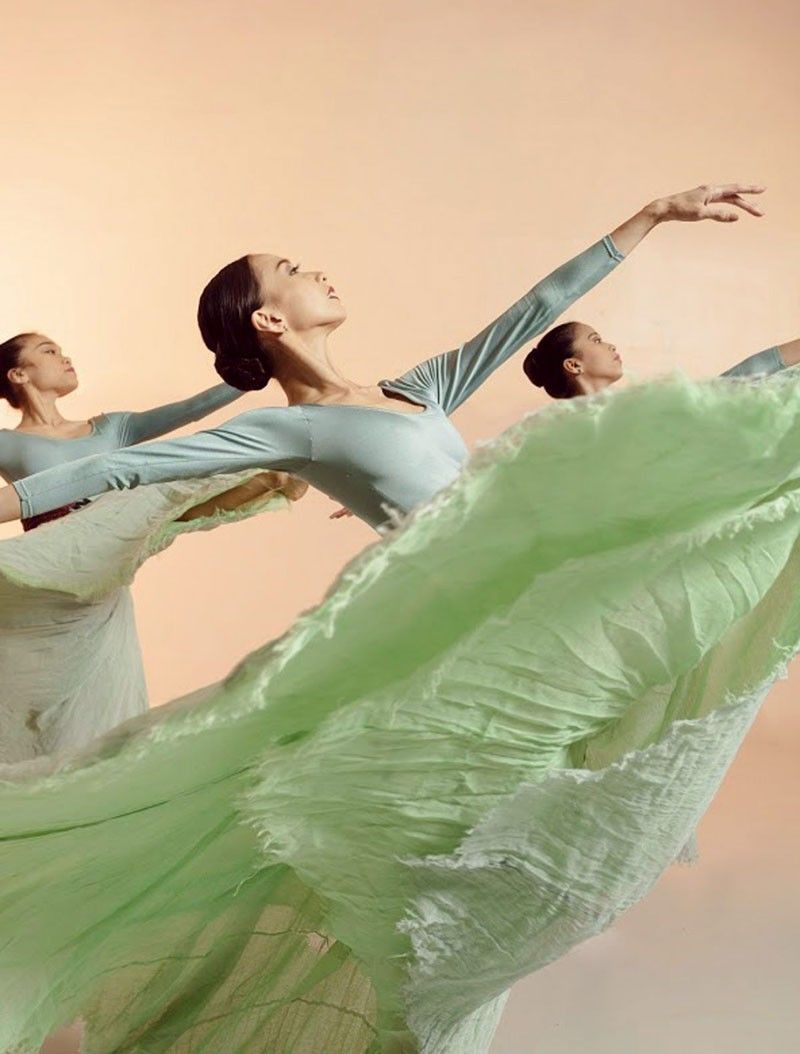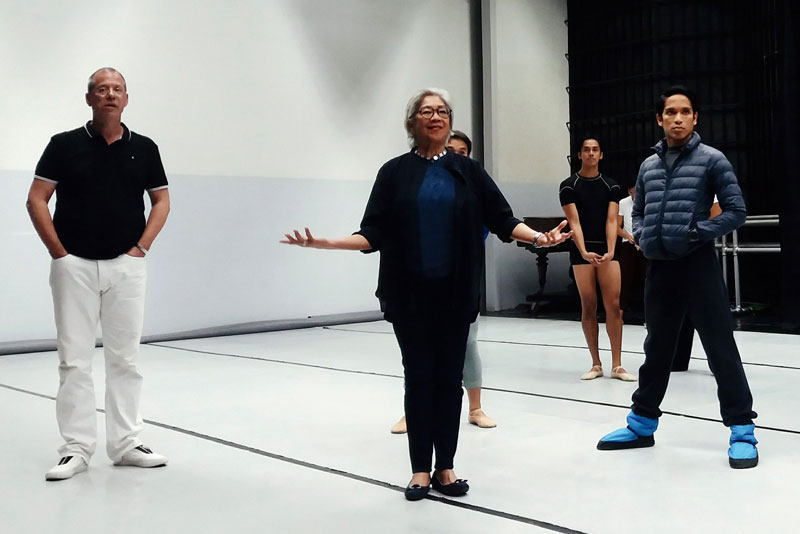Alice Reyes’ ‘Carmina Burana’: The dance that thunders


Clad in long, flowing white, bodies run from one point to another, roll on the floor, and raise their arms to the sky, as if in worship. Directing their motion is a soft pounding chorus of voices, part holy hymn, part Armageddon anthem. There is something so deliciously irreverent and frighteningly reverential about the dance. At some point, we wonder if we’ve stumbled upon an army of saints or lost souls in Dante’s limbo. Instead, we’re told that this is Alice Reyes’ Carmina Burana, which has returned to the stage to open Ballet Philippines’ 49th season.
Ballet Philippines’ march towards its 50th year has been defined by a series of comebacks. As Reyes, National Artist for Dance and BP company founder, has returned last year as artistic director, she brings back beloved dances from the company’s rich, decades’ worth of repertoire. Reyes’ Carmina Burana was joined by other worthy acts: Ronelson Yadao’s Sama Sama, Brando Miranda’s Vivaldi Concerto, and Norman Walker’s Seasons of Flight.
Prior to the opening, Reyes has let us in to Ballet Philippines’ rehearsal room. The company has gotten back from a cultural diplomacy trip in Shanghai and Beijing, where audiences applauded the range of styles the dancers could perform. “As you can see, they can go from pointe shoes to bare feet to soft shoes,” says Reyes. Ballet Philippines is known to straddle classical ballet and modern dance, calculated grace and mad abandon. Stretching and turning like sprinters waiting for the run to begin, the dancers took their positions in front of us, in a bare rehearsal room under bright white light, and waited for the music to set them spinning.
Reyes has built the choreography around Carl Orff’s scenic oratorio. Orff’s masterwork opens with O Fortuna, the music that has followed us all our lives perhaps without us even knowing. O Fortuna is a musical darling of the silver screen, the anthem that has accompanied warring horsemen, mad lovers, and charging beasts. But before it heralded the climactic sequences of war films and video games, Carmina Burana already had a curious history behind it.

Alice Reyes, National Artist for Dance and founder of Ballet Philippines, returned last year as the company’s artistic director. “One of the most exciting things for me is seeing and reviewing all the repertoire that Ballet Philippines has,” she says. “We’ve had this focus not only on developing technique and performance artistry, but also on developing, mentoring and presenting choreographic talents.” Photo by Pristine L. De Leon
The text of Orff’s work was taken from an anonymous manuscript of Goliardic verse, dating back to the 13th century. These poems were written by students and wandering monks railing against fate for the pleasures they were to leave behind (drinking, merrymaking, lovemaking) and it was up to Orff to assemble the swell of sounds to send these cries to the higher heavens — or at least to us who would hear its echoes, centuries after the first thunder.
“They’re rather bawdy, naughty, sexy songs,” says Reyes. The baton has now been passed on to noted musical director and conductor Gerard Salonga and the ABS-CBN Philharmonic Orchestra, played as The Philippine Madrigal Singers breathed chilling life to the monks’ lament.
“Carl Orff’s music is so strong,” says Reyes. “It really is one of the most powerful pieces written so it’s a tremendous challenge for any choreographer to take it on. Usually when a piece of music is that strong, you’re better off saying ‘Ah, I won’t go there.’ But I did.”
Through movement, Reyes sought to tell a story of people in a village, “with all the longings, the need for some connection with somebody, the desire to have community fun and dancing songs.” Yet the dance, much like the music, is infinitely open to interpretation. Reyes shares that decades after Carmina Burana premiered in 1974, her thrill in restaging the piece lies in watching how the company’s younger dancers now take it on and interpret it. “Occasionally it will look quite different,” she admits. “But I won’t touch it. It doesn’t have to be my step; it can be their interpretation of my movement… Dance has to be experienced. It’s the experience that a particular dancer gives to you.”
At the CCP, sopranos sing Orff’s high notes as the orchestra plays. Bystanders outside might easily mistake it for a worship hymn but the sensation abruptly shifts: The silence swells and the words come slowly like an incantation. Dancers drop to their knees, bend their arms like an army ready to fire. Bodies alternately drop, reach, roll, and turn — it’s like watching a surge of waves in an angry ocean. Carmina Burana is both anger and longing, the storm of passion that’s a pleasure to watch.
Even the monks may be grinning from high above.
* * *
National Artist Alice Reyes’ Carmina Burana recently opened Ballet Philippines 49th season at the Cultural Center of the Philippines.



















